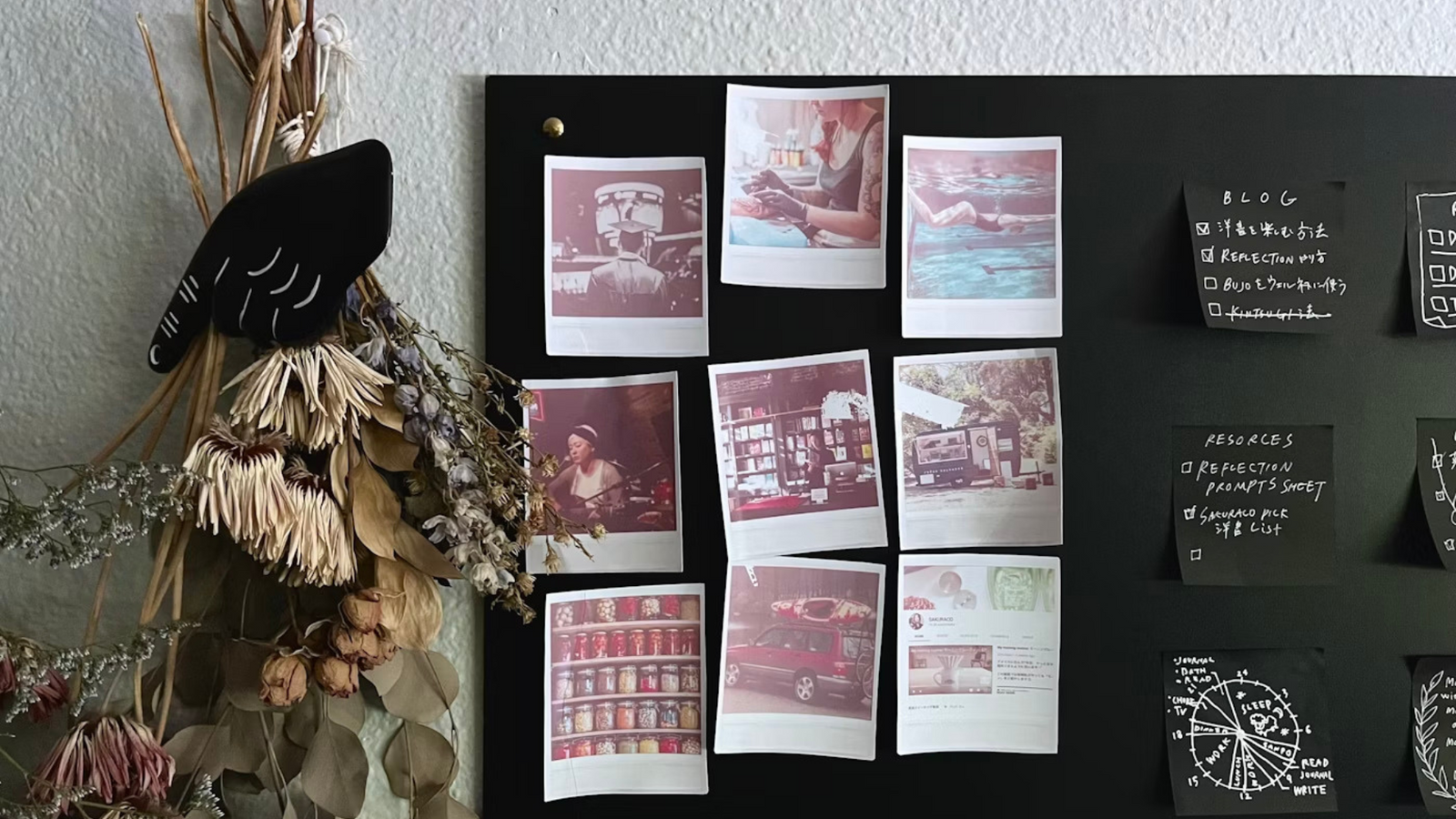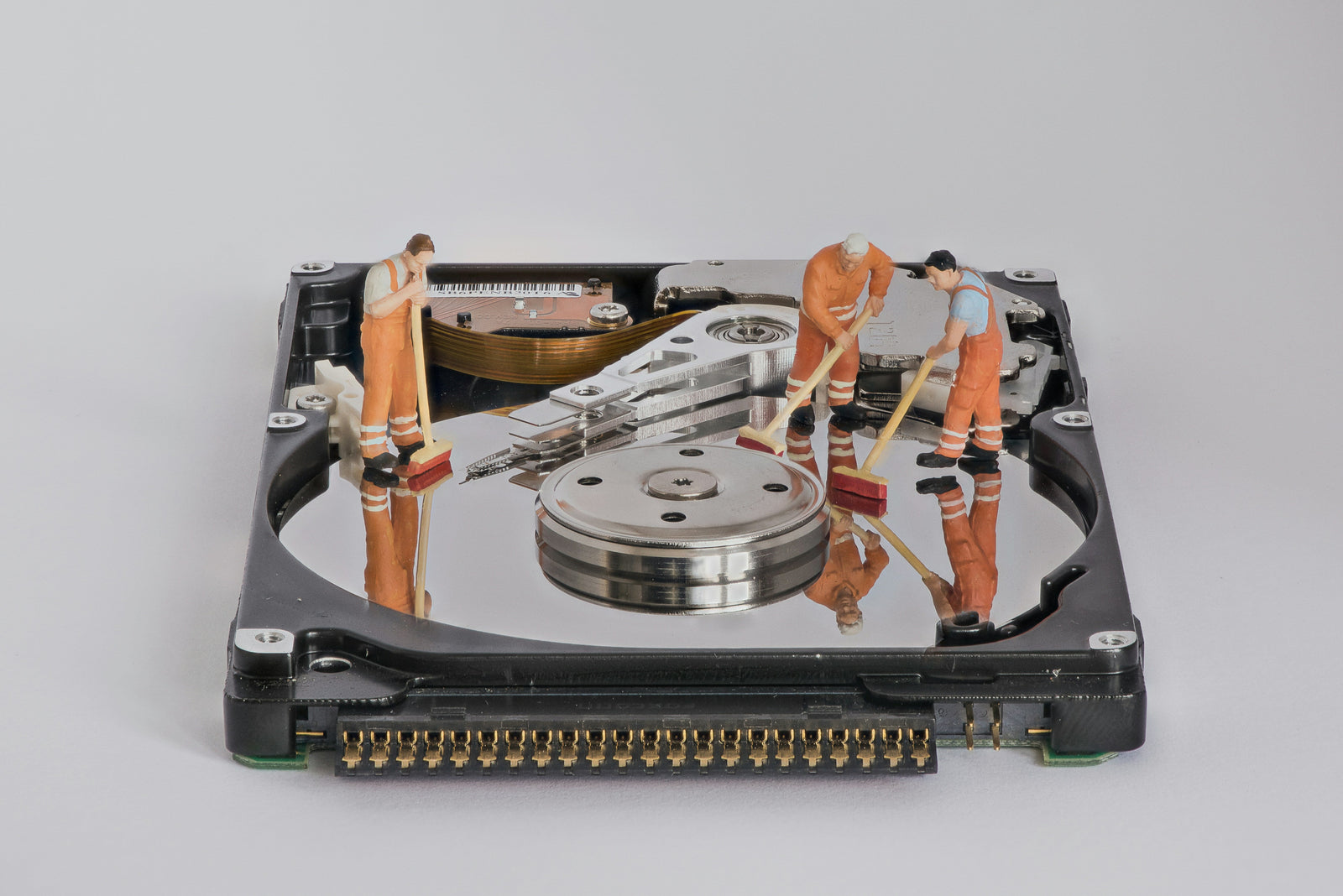This article first appeared on Bujo U and has been edited for public access.
It's okay, you can un-cringe now. I am not going to talk about the law of attraction or manifestation. (Although there is absolutely nothing wrong with these concepts, I know they can be a bit too "woo woo" for some of you.) What I am going to share is simply my experience and what I have learned through the years of making vision boards to complement my Bullet Journal practice. But first: what the heck is a vision board?
What is a vision board?
A vision board is a tool used for visualizing your goals and aspirations. It is typically a collage of images, words, or phrases that represent the things you want to experience in life.
Here are some of the Vision Boards I created over the years.



Why make it?
To me, the reason can be condensed to two common proverbs: "A picture is worth a thousand words" and "Out of sight, out of mind."
A picture is worth a thousand words
Images allow me to connect deeply with certain ideas in a way that written words sometimes cannot. To emphasize this, I'll share one picture with you. You get the idea.

Out of sight, out of mind
As my nearly one-year-old daughter learns about object permanence, discovering that hidden toys still exist under blankets, I've noticed my own object permanence seems to be fading. If something isn't in my immediate view, it might as well not exist. (This explains why I currently have three open tubs of peanut butter sitting in my pantry—#shortyproblems.)
I've come to realize it's both unrealistic and unkind to expect myself to consistently take intentional actions when I struggle to even keep track of my Skippy supply.
That's why I create a vision board (and practice Bullet Journaling at all). To get in touch with my intentions, and keep it in sight. 👀
Where to place your vision board
There's no better place to showcase my vision board than inside my Bullet Journal, because that's where all of my intention setting, action planning, and reflections actually take place.
To ensure that my vision board remains a core part of my Bujo practice paired with my intentions, I placed it at the very beginning of my Bujo the last time I made it, and it's worked out really well so far!
As someone who goes through multiple notebooks a year, I was initially concerned that my vision board would fall by the wayside as soon as I started a new notebook. However, the opposite happened. Seeing my vision board every day during my Bujo practice imprinted a vivid image in my mind, which had a lasting impact even after migrating to a new volume. I think it was also helpful that I would revisit the Bujo containing my vision board during my quarterly reflections.
How to make a vision board for your Bullet Journal
In a nutshell, you collect pictures that represent what you want to experience, arrange them on a board, and hanging it where you can see it daily.
Sounds simple, right? Yet, here I am writing a lengthy article on Crafting Vision Boards. Why?That's because it can be paralyzing for someone like me who tends to overthink EVERYTHING. (What exactly does "a dash of salt" mean? How many grams is that? Should I use two fingers or three?)
This article is my attempt to guide fellow over-thinkers through creating vision boards without falling into the analysis paralysis, or spending hours scrolling through Pinterest (yes, it happened to me).
The process I'm sharing here has evolved to meet my needs, but feel free to adapt and experiment with it. I invite you to share your insights and discoveries along the way!
STEP 1: Do your Wheel of Life Reflection
First things first, let's get crystal clear on what we truly want to experience in life. It's easy to imagine sipping Piña Coladas on a beach or living in a penthouse overlooking Central Park, but are these desires truly ours? Are they genuinely important to us?
To uncover what is meaningful on a personal level, we need to start by examining our own experiences. One effective way to do this is by reflecting on our current life circumstances and how they are making us feel, right now.
My favorite way to go about it, is by using "a wheel of life ". You can create a simple diagram like the one in the picture.

You rate your satisfaction level in Physical Health /Mental Health / Relationships / Personal Growth / Finances / Career / Play,Leisure / Environment on a scale from 1 to 10. Then, write what you want more/less of in the context of BE, DO, Have.
*In my current practice, I am experimenting with Maslow's Hierarchy of Needs instead of using Life Areas.
STEP 2: Collect Images
Now that we have a more personalized and nuanced view of what we want more of/less of in life, we start collecting materials.
Where to source the images from:
- Printed Media: Magazines/books/newspapers
- Online image stock websites: Google image search/ Pinterest / Unsplash
- Things you "liked" and "bookmarked" on your social media
- Your camera roll
What kind of images to collect: Add in the verb, not just the noun
One of my dreams is to have a running column in a printed magazine, so I kept searching for images like "magazine cover" or "woman holding a magazine" or "magazine at a coffee shop", but none of them really 'spoke to me'.
Upon reflection, I realized that a) the images weren't personal enough to me, and b) they were only the depiction of the extrinsic motivation so it failed to kindle my intrinsic motivation. I then experimented with including a drawing of a magazine page, with my picture on it (= an outcome/extrinsic motivation), accompanied by a picture of my ultimate writing setup (= process/intrinsic motivation) that I enjoyed using when I was writing my first book. *See bottom left to the center of the right page.

This was a game changer, to include the images that represented the process part of my vision.
*According to this article on Psychology Today, those who visualize about training, have better outcomes than those who visualize about winning!!
Some other examples for outcome and process will be like this:
- If you want to publish a book, maybe include an image of someone peacefully writing or joyfully sharing their work, not just a picture of a book on a shelf.
- If you want a diploma, you could maybe pick an image (or maybe even text) of you immersed in a deep discussion on the topic you are interested in learning.
-Want to get fit? Maybe include pictures of you in workout clothes, or an image of a person cooking a meal.
When in doubt, ask thy heart
All that said, it can still be hard to narrow down to a few images. In times like this, I ask myself: "What kind of feeling does this experience bring to me when this comes true? And which image evokes that emotion the most?"
As I wrote in the "where to choose sources from" section, you don't always have to go looking for images outwardly. If you are looking for images that provoke the feeling of being adventurous, perhaps you could include that photo of you with a very bold haircut you'd gotten one summer, because at that moment, regardless of the unpopular opinion from your peers, you felt undeniably adventurous.
STEP 3: Crafting the Board
There are many different ways to go about this. Some of you may be contemplating whether to go...
Digital or Analog?
Fellow crafters might really like the tactile and physical experience of making collages, while others might appreciate the ease and simplicity of sorting images digitally. There really is no right or wrong way to go about this. I am, though, a passionate hobbyist who enjoys any crafting project, so naturally, I gravitate towards the first option. Unfortunately, I just don't have the luxury to turn this into a huge craft project at the moment. So, my solution?
Going Hybrid
First, I will create a digital Vision Board on Canva (a very user-friendly online graphic design tool), then I will print it out and glue it inside my Bujo! This way, you can easily duplicate and post it somewhere in your house or office, or even set it as the background of your computer, if you are so inclined.
Are you thinking hybrid is a good fit for you but you're not really sure where to start? I got you. I've created some sample vision board templates on Canva that you can download from here!
Sample vision board on Canva.

Ways to Arrange Your Vision Board
For arranging the images, here are some ideas to help you get started!
By Category
Life Areas:
Arrange images according to different areas of your life, such as physical health, mental health, relationships, personal growth, finances, career, play/leisure, and environment.
Mind Map Style:
Create a central image or theme in the middle and branch out with related images and concepts.
Chronological Order:
Arrange images in the order of when you want to achieve the goals, from short-term to long-term.
Mood and Emotion:
Choose images that evoke specific emotions and group them based on how you want to feel (e.g., joy, peace, excitement).
Color Coded:
Use different colors to represent different areas or themes for a visually appealing and organized board.
By Layout
Grid Layout:
Use a grid layout for a neat and organized look, making it easy to see each section clearly.
Collage Style:
Mix and match images, quotes, and other elements in a more freeform, artistic collage style.
STEP 4: Taking action to make your vision board happen
Remember, our dreams and ideas are precious, but bringing them to life involves taking small, consistent steps!
Another great tool I frequently use, especially when I have a big project related to my vision, is "The 12 Week Year" framework. (You can watch how I use this system in my Bujo here.)
But let's face it: we can plan and plan until we are blue in the face, but it's still so hard to "walk the walk". If you struggle to "be your words" like me, I highly recommend the "Writing For Being" course. It provides journaling exercises, learning materials, and perspective-shifting discussions that help us become "the author of our life," as Ryder puts it.
STEP 5: See that it's all already here, with you, at this very moment
All of this is wonderful. We are dreaming big and pushing forward with enthusiasm. However, I am reminded time and again that whatever we long for, wish for, or seek out is often already within us. It may not be exactly as we envision it, but if we know where to look and examine closely, it is there.
For instance, if your vision includes a lush garden, you might already nurture a mini cactus plant you impulsively bought at the checkout line at Home Depot. Or, if you aspire to write a novel, perhaps you incorporate a small dose of fictional narrative every time you talk to your friend about what happened "that one time you got soooo drunk." Or, if you dream of becoming a great cook, maybe your partner raves and raves about the special dish you prepared for their birthday.
These are all concrete examples, but you can also focus on feelings. What people, activities, or actions currently present in your life evoke the emotions you want to experience in your visions?
Trying to spot all these little ways that the seeds of our visions already exist in our day-to-day life is not only empowering but also really... reassuring.
In Practice
You can set up a dedicated monthly log to capture experiences, actions, people, and things that are aligned with your vision(s)!
My current approach is to log every piece of writing and digital content I produce in The Pocket Bullet Journal. It shows how I am showing up to support my vision of being an impactful creator. (I am using the Pocket because I want to document my progress over the years. This will allow me to have all my records consolidated in one place, so I can easily track my evolution over time.)
Daily Dashboard, as introduced by Ryder, is another great way to capture moments, actions, and wins that are aligned with your intentions!
Parting words
Integrating visual inspiration into my Bujo practice has truly enriched my experience, and helped me see that the magic of a vision board lies in its power to inspire and rekindle my passion. Whenever in doubt, ask yourself: Does it give me butterflies every time I glance at it? Let this feeling guide you—from gathering materials to knowing when it's time to recreate your vision board.
And if you read this lengthy article till the end, thank you for your time. I will be looking forward to hearing your thoughts, questions, or what you learn in the process.
About the Author







Louise
March 12, 2025
Hi thank you fir writing article. Can you please share the link for the “writing for being” course you referred to in your article.
Enjoy this day.
Louise